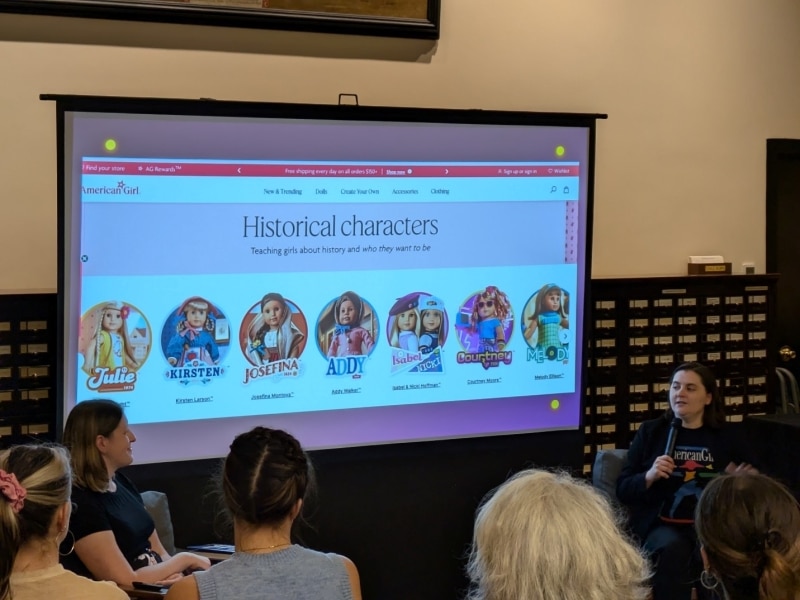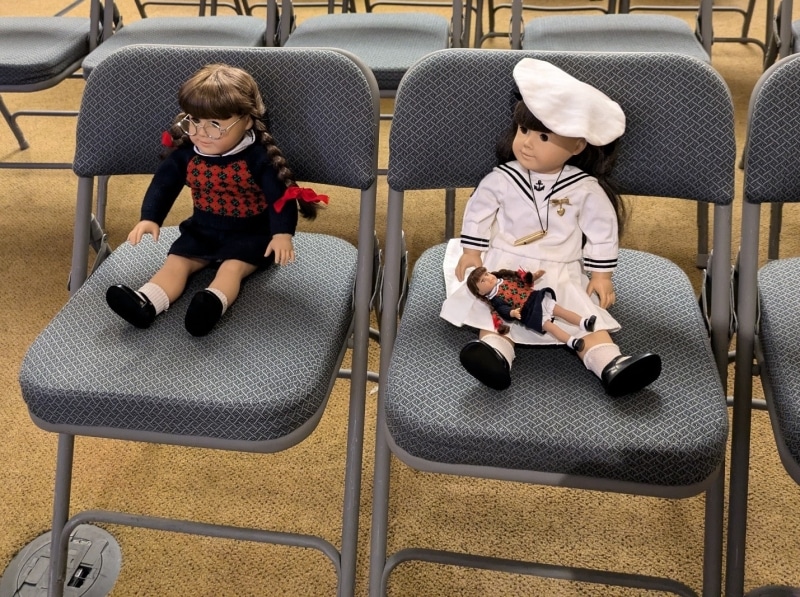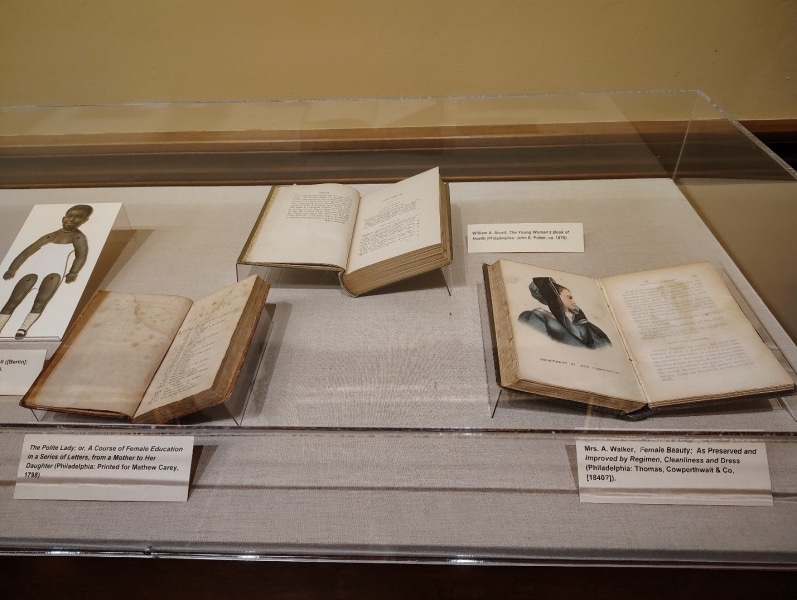Are You A Molly?: August Program Bridges American Girl’s Past and Present
Amy Sopcak-Joseph
Director of the Davida Tenenbaum Deutsch Program in Women’s History
It is not every day that the Library Company anticipates welcoming visitors in both human and doll form. On August 8th, the staff was delighted to see both in attendance at “Dolls of Our Lives: Exploring American Girlhood, Then and Now.” The program took its name from a recent book exploring the production of, and more recent millennial nostalgia around, the American Girl brand. For the uninitiated, the American Girl brand was founded in 1986 by educator-turned-entrepreneur Pleasant Rowland. She founded “Pleasant Company,” which initially developed three historical characters American girls: Kirsten, Samantha, and Molly. The company produced a series of six books around each character suitable for elementary school-aged girls. Families could purchase the actual characters in doll form along with various accessories featured in the books. Pleasant Company later expanded the set of historical dolls, and now it largely sells customizable dolls with modern accessories. Senior Curator of Graphic Arts Sarah Weatherwax reports that the Library Company has a direct link to the American Girl dolls: researchers from Pleasant Company conducted research for product development in the reading room in the 1990s and early 2000s.
Our speaker on August 8th, Mary Mahoney, has had her finger on the pulse of the nostalgia felt by many 30- and 40-somethings about American Girl. With Allison Horrocks, Mahoney co-hosted a very popular podcast and published Dolls of Our Lives: Why We Can’t Quit American Girl in 2023. As podcast hosts, Mahoney and Horrocks revisited many of the historical characters; they spent a few episodes focused on each girl and analyzed the historical narrative, book by book. Their book, Dolls of Our Lives, examines the history of Pleasant Company itself, Rowland’s deep interest in Colonial Williamsburg and desire to allow families to bring home a little museum for girls to play with, and the ways that readers and doll enthusiasts have been shaping their own American Girl stories. Our event mimicked the podcast format: Mary and I conversed about a range of topics, including the process of researching her book, the connections to the Library’s collections, critiques of the historical characters, and the enduring American Girl fandom that is expanding to a new generation of girls.
Throughout 2024, the Davida Tenenbaum Deutsch Program in Women’s History has been exploring a number of life stages that many American women face. Corinne Field examined how nineteenth-century suffragists grew older alongside their fight for women’s voting rights. Short-term fellow Shana Klein told us a bit about her current research on motherhood, a stage that is not shared by all but that varies even from person to person. Klein’s project delves deeper into how perceptions of maternal practices are shaped by race and ethnicity. Andrea Pappas’s Fireside Chat on the deep knowledge necessary to produce embroidery of colonial landscapes looked at yet another facet of womanhood – the skill with the needle that so many women in the past developed and even depended on. What was missing from this set was an examination of girlhood, and Mahoney’s program invited attendees to think about the historical aspects of girlhood reflected through various American Girl characters as well as the changes and consistencies in that experience up through the twenty-first century.
A major goal of bringing American Girl enthusiasts to the Library Company was to connect them with some of the women’s history materials preserved in our collections. Attendees were treated to a small exhibition of materials related to the American Girl doll characters. For example, Pleasant Company researchers developed a school kit for each historical character, and each kit includes a miniature version of a popular schoolbook from the period. The Library Company’s collections contain full-length versions of the schoolbooks carried by Kirsten (a Swedish immigrant who lives in Minnesota in the 1850s) and Addy (a young Black girl whose family has recently escaped slavery to live in Philadelphia). The accessories collections for the Kirsten doll were particularly rich in examples of historical print culture; consumers received awards of merit in her school kit and her “winter pastimes” kit came with paper dolls made from fashion illustrations from issues of Godey’s Lady’s Book (all pictured below).
Mahoney’s book also explores other popular media produced by Pleasant Company in the 1990s and early 2000s, including a guidebook called The Care and Keeping of You and a monthly magazine, American Girl. These are other areas where the Library Company’s collections are rich in examples – and are particular favorites of mine. Authors have not lacked ideas about how young women should be raised and educated. I was enthusiastic about considering didactic books that the historical American Girl characters might have picked up themselves as they grew up, but I eventually realized that I had created quite a challenge for myself. How does one pick just two or three examples because the display case can only hold so many items? Attendees perused the tables of contents of the 1798 edition of The Polite Lady; or, A Course of Female Education and the 1870 edition of William Alcott’s The Young Woman’s Book of Health to get a taste of the lessons that such books imparted.
For more on the American Girl brand and its fandom, you can find back episodes of “Dolls of Our Lives” as well as other podcasts on your favorite podcast player.
A special thanks goes to the LCP staff who contributed time and energy to this program, including Erika Piola, Sharon Hildebrand, Fran Dolan, and former staffers Alison Kronstadt and Alec Staley.








